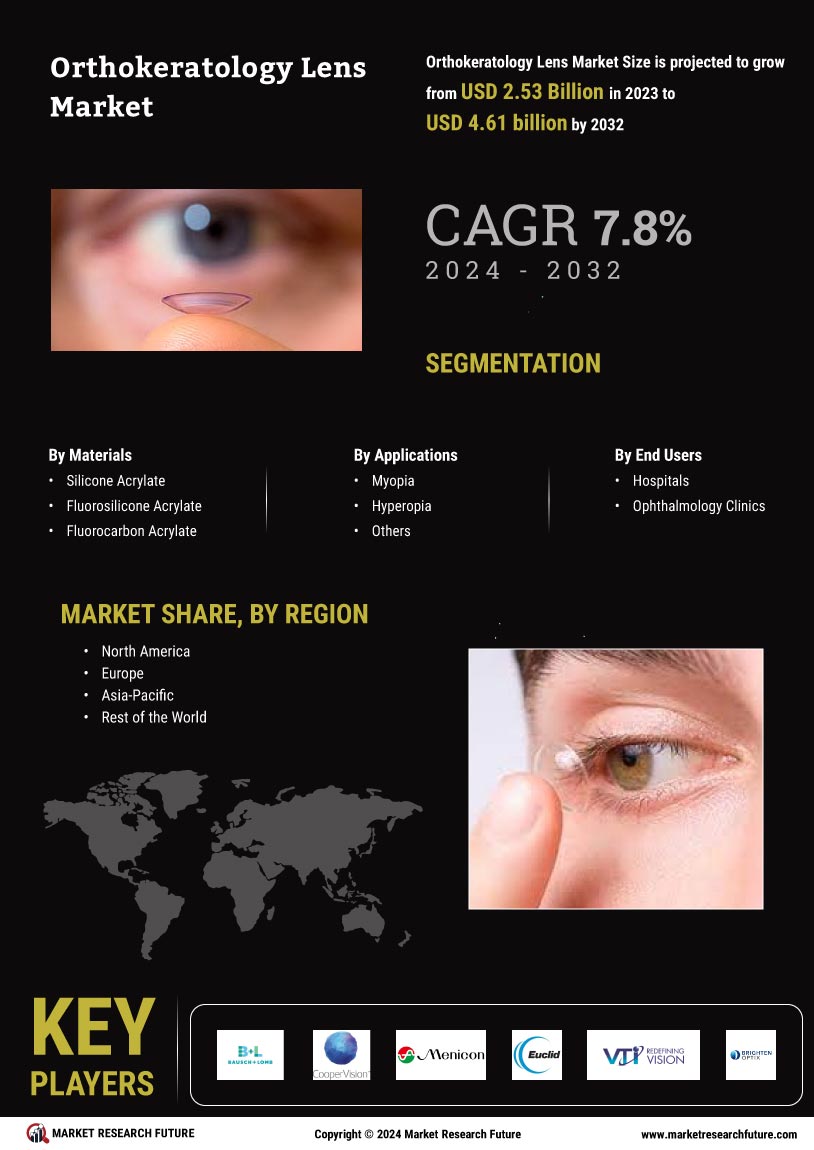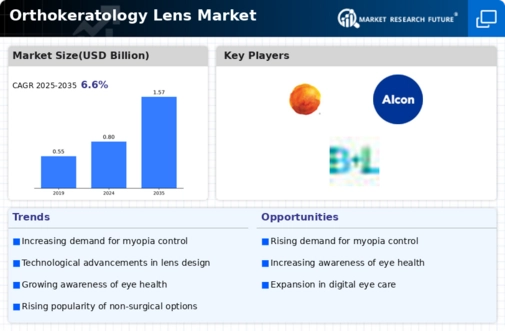By Region, the study provides market insights into North America, Europe, Asia-Pacific, and the Rest of the World. The North American Orthokeratology Lens Market accounted for USD 1.07 billion in 2022 and is anticipated to exhibit a significant CAGR growth over the study period. Recent advancements in orthokeratology lenses, the introduction of overnight ortho-K lenses, and flexibility and choice are some factors driving North American market growth. The increasing number of cases of visual impairment, combined with the increased use of orthokeratology lenses in Canada and the United States, is expected to create numerous growth opportunities throughout the region.
Moreover, major US market players such as Johnson & Johnson Vision, CooperVision, and Bausch & Lomb Inc are expected to increase their regional orthokeratology lens market share in the coming years. For example, in April 2021, Johnson & Johnson Vision partnered with Menicon to combine their expertise with the scope, science, and capabilities of J&J Vision to address the rising number of pediatric cases of myopia. Menicon will develop therapeutic contact lenses as part of the collaboration, while J&J Vision will focus on increasing the range of new products.
Furthermore, the major countries studied in the market report are the U.S., Germany, Canada, France, the UK, Spain, Italy, Japan, India, Australia, China, South Korea, and Brazil.
The European orthokeratology lens market has the second-largest market share, owing to the region's growing senior population and preference for correcting optical issues without surgery or traditional glasses. Moreover, rising government initiatives to increase the availability of high-quality treatment drive orthokeratology lens market demand in this region. The usage of orthokeratology lenses among medical professionals is anticipated to rise with the prevalence of ocular conditions like myopia and presbyopia. Technological advancements and increasing the number of products obtaining CE approval are further expected to boost regional growth.
Additionally, the German orthokeratology lens market held the largest market share, and the UK orthokeratology lens market was the fastest-growing market in the European region.
The Asia-Pacific Orthokeratology Lens Market is anticipated to grow at the fastest CAGR from 2022 to 2030, owing to the adoption of advanced products such as SEED and ProCornea and the region's growing senior population. Besides, an increase in awareness of eye disorders and the expansion and launches of significant players in this region are expected to drive market growth. In December 2020, for example, a Menicon Alpha Corporation subsidiary formed ALPHA (WUXI) Co. Ltd, a local Chinese Subsidiary, to increase the volume and business of orthokeratology lenses in China.
Moreover, the growing number of ophthalmic clinics and hospitals in Asian countries is expected to boost demand for orthokeratology lenses over the projected period. Furthermore, China’s orthokeratology lens market held the largest market share, and the Indian orthokeratology lens market was the fastest-growing market in the Asia-Pacific region.














Leave a Comment